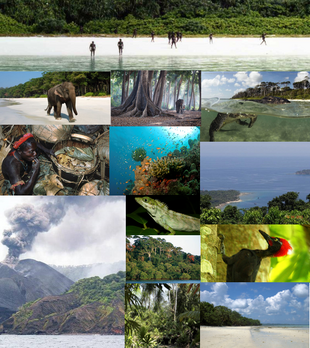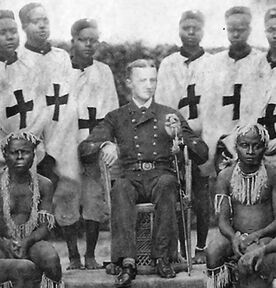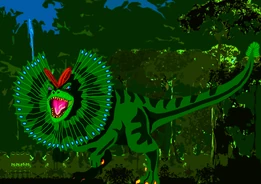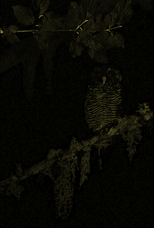
Images of the Andaman Islands
The Andaman Islands form an archipelago in the Bay of Bengal between India, to the west, and Myanmar, to the north and east. Most are part of the Andaman and Nicobar Islands which are the Union Territory of India, while a small number in the north of the archipelago, including the Coco Islands, belong to Myanmar. The Indian territory of the Andaman and Nicobar Islands also shares territorial borders with Thailand and Indonesia.
The Andaman Islands are some of the least explored islands on Earth, with some of the most isolated peoples. With the indigenous peoples fending off any attempts of landing or settlement by invaders, very little was known about the Andaman Islands for most of recorded history, apart from maritime legends (including some from prominent explorers of antiquity, such as Marco Polo). This changed when the British established a permanent foothold on the islands during the late 19th century. Explores from the 19th century to present have noted strange and unique organisms; some of which remain undiscovered.
Cryptids[]
During the late 19th century, British explorers started to make contact with some of the indigenous peoples (particularly, the Great Andamanese) and they in turn introduced the British to the flora and fauna of the land. Some of the creatures reported by the Andamanese could not be explained by the explorers; some more unknown creatures were reported in the archipelago after British rule. The possibility of new organisms being discovered in the Andamans is likely due to the scarcity of what is known of the creatures inhabiting this new-found world.
Kara-duku[]
- Main article: Kara-duku

Photo of British explorer M.V. Portman, who claimed to have been shown Kara-duku bones.
The Kara-duku, or Kara Lizard (duku is Great Andamanese for lizard) is a giant large-toothed creature reported by the Great Andamanese to inhabit the Andaman archipelago. The Great Andamanese believed the creature was the spawn of monitor lizards [1]. British explorers were told of the creature. Initially translated thought it was a crocodile after the explorer Portman allegedly claims to have been shown some bones of the Kara-duku that were he thought were crocodile-like in the Middle Andaman [1]. His British explorer contemporaries; however, refuted such a claim as no one (except for Portman), was able to identify anything crocodile-like in the vicinity of where Portman was shown the bones [1]. The widely-held belief for what the majority of the explorers thought at the time was that the Kara-duku was in fact a term for sperm whales, although this notion was questioned because the Great Andamanese word for sperm whale was already well-known as Biriga-ta. Many of the British explores assumed that the Kara-duku must of been an alternate name for Biriga-ta (sperm whales), though it was unclear to the explorers what Kara-duku exactly was [1]. Also, sperm whales don't match the lizard description of the Great Andamanese and Portman.
J̌irmu[]
- Main article: J̌irmu

Artist's rendering of J̌irmu with a green fluorescent collar (similar to that of Wilson's bird-of-paradise) with eyespots similar to that of peafowl.
Throughout the Great Andaman there is a belief in a huge animal that haunts the jungles... It attacked and killed any men and women who came in its way.
The J̌irmu or is a giant carnivorous creature that was feared by all the tribes of the Great Andamanese [2]. It was believed to kill any creature that it encountered in its path. It was reported by the Great Andamanese to have a call sounding like "dire" [2]. The Great Andamanese reported that the J̌irmu still lived amongst them [2]. When the British first introduced elephants to the islands during the late 19th/early 20th, the Andamanese feared them as J̌irmu [2].
Andaman Wood Owl[]
- Main article: Andaman Wood Owl

Artist's rendering of the Andaman Wood Owl
The Andaman Wood Owl is a mysterious owl-like creature, reported from inside dense forests of Andaman and Nicobar Islands, Indian Ocean. It could possibly be some unknown species of Wood owl (Strixsp.). Other small owls, including the Andaman scops owl (Otus balli) and the Andaman hawk owl (Ninox affinis), are known to live on the islands [3]. It could potentially relate to the Arami or Kopo-tera-wat, which were types of bird spoken of by the Great Andamanese that were not identified [4].
čarami-lebek[]
čarami-lebek was a type of bird spoken of by the Great Andamanese that was not identified. The Andamanese claimed the bird could only be found at the top of the tallest trees of the forest [4].
References[]
- ↑ 1.0 1.1 1.2 1.3 A.R.,Radcliffe-Brown. Myths and Legends of the Andamans. The University press, 1922. Pg 194-197 isbn=1296034577
- ↑ 2.0 2.1 2.2 2.3 A.R.,Radcliffe-Brown. Myths and Legends of the Andamans. The University press, 1922. Pg 225-226 isbn=1296034577
- ↑ Eberhart,George. Mysterious Creatures: A Guide to Cryptozoology. ABC-CLIO, 2002. Pg 8 isbn=1-57607-283-5
- ↑ 4.0 4.1 A.R.,Radcliffe-Brown. Myths and Legends of the Andamans. The University press, 1922. Pg 207-footnotes isbn=1296034577 Cite error: Invalid
<ref>tag; name ":3" defined multiple times with different content
